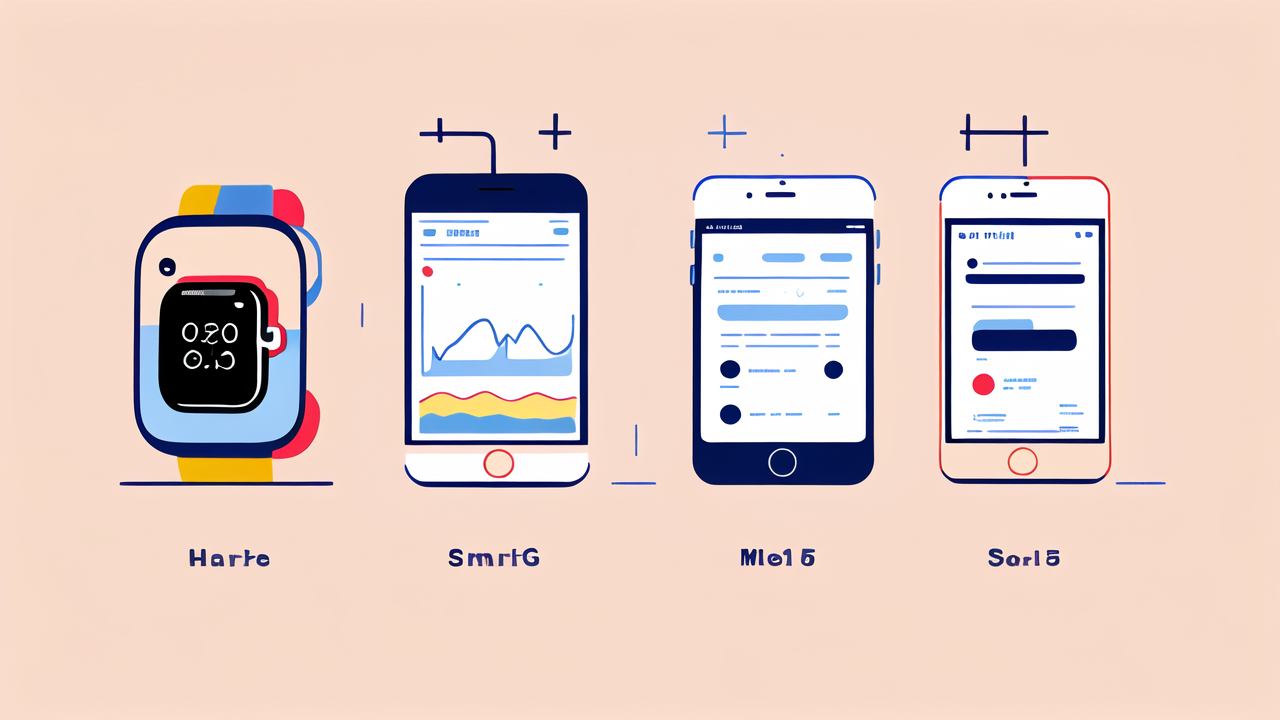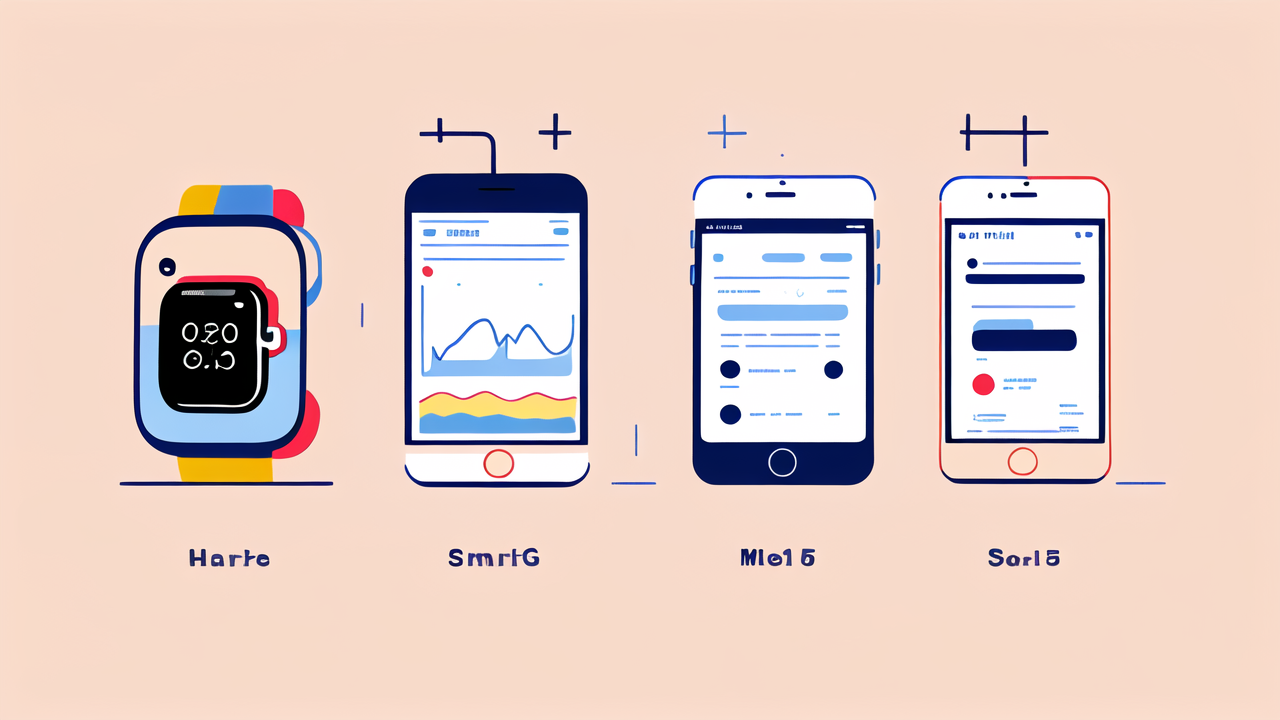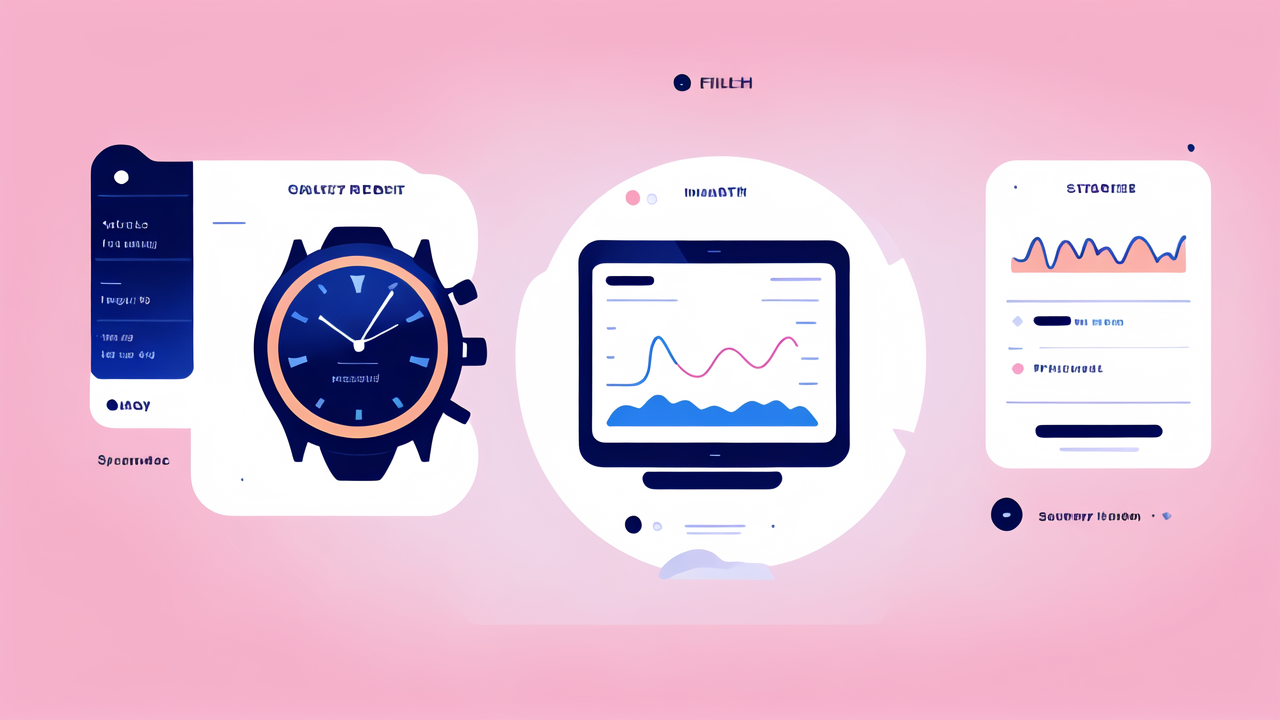The Evolution of Wearable Technology: From Fitness Bands to Smartwatches
A Brief History of Wearable Fitness Devices
Wearable fitness devices have come a long way. They started as simple pedometers. These counted steps and not much else. Then came fitness bands. They tracked more data like heart rate and sleep patterns.

The real game-changer was the smartwatch. It combined fitness tracking with smartphone features. The first popular smartwatch was the Pebble in 2013. Apple followed with its Apple Watch in 2015.
Since then, smartwatches have become more advanced. They now offer features like GPS, mobile payments, and health monitoring. The focus has shifted from just fitness to overall health and wellness.
The Rise of Smartwatches in the United States Market
Smartwatches have seen huge growth in the US market. In 2015, only 3% of US adults owned a smartwatch. By 2020, that number jumped to 21%.
Apple dominates the market with its Apple Watch. Other popular brands include Samsung, Fitbit, and Garmin. The COVID-19 pandemic boosted sales. People became more health-conscious and wanted to track their vitals.
Smartwatches are no longer just for tech enthusiasts. They've become mainstream. Many people now see them as essential health tools. This trend is likely to continue as features improve and prices drop.
Key Technologies Enabling Advanced Wearable Features
Several technologies make advanced smartwatch features possible:
- Sensors: These include accelerometers, gyroscopes, and heart rate monitors.
- Miniaturization: Smaller components allow for more features in a compact device.
- Battery technology: Improved batteries provide longer life in smaller sizes.
- Connectivity: Bluetooth, Wi-Fi, and cellular connections enable data syncing and standalone use.
- Software: Advanced algorithms turn raw data into useful insights.
These technologies work together to create powerful health monitoring tools. They allow watches to track everything from steps to sleep quality to blood oxygen levels.
Health and Wellness Measurements: Pushing the Boundaries in Watch Design
Body Measurement Tracking: What's Next for Watches?
Smartwatches are set to track even more health metrics in the future. Here are some possibilities:

- Blood glucose monitoring: This could be a game-changer for diabetics.
- Blood pressure tracking: Continuous monitoring could help manage hypertension.
- Hydration levels: This could help athletes and anyone trying to stay properly hydrated.
- Stress levels: By measuring heart rate variability and other factors.
- Body temperature: This could help detect early signs of illness.
These features could turn smartwatches into powerful health management tools. They might even detect health issues before symptoms appear.
The Role of AI and Machine Learning in Health Monitoring
AI and machine learning are crucial for future smartwatch capabilities. They can:
- Analyze large amounts of data to spot patterns.
- Provide personalized health insights and recommendations.
- Predict potential health issues based on user data.
- Improve accuracy of measurements over time.
For example, AI could analyze your sleep patterns, activity levels, and heart rate. It might then suggest ways to improve your overall health. Or it could alert you to potential health risks before they become serious.
Regulatory Implications and Ethical Considerations
As smartwatches become more advanced, they face new challenges:
- FDA approval: Health features may need regulatory approval.
- Data privacy: Watches collect sensitive health data that needs protection.
- Accuracy concerns: Health measurements must be reliable.
- Ethical use of data: How should predictive health data be used?
Companies must navigate these issues carefully. They need to balance innovation with user safety and privacy. Clear guidelines and regulations will be crucial as smartwatches become more like medical devices.
The Impact of Body Measurement Tracking on Consumer Behavior
Shaping Lifestyle Choices with Real-Time Data
Real-time health data from smartwatches is changing how people live. Here's how:

- Increased awareness: People are more conscious of their health metrics.
- Motivation: Seeing progress encourages healthy behaviors.
- Personalized goals: Data helps set realistic, individualized targets.
- Immediate feedback: Users can see the impact of their choices right away.
For example, someone might see their heart rate spike after a sugary snack. This could encourage them to make healthier food choices. Or they might notice improved sleep quality after establishing a bedtime routine.
Real-time data makes health more tangible and actionable. It turns abstract concepts into concrete numbers people can work to improve.
How Smartwatches Are Influencing Health and Fitness Trends
Smartwatches are shaping health and fitness trends in several ways:
- Rise of step challenges: Many people now aim for 10,000 steps a day.
- Focus on heart rate zones: Users optimize workouts based on heart rate data.
- Sleep tracking popularity: More people are prioritizing sleep quality.
- Mindfulness reminders: Watches prompt users to take breathing breaks.
- Virtual fitness classes: Watches integrate with online workout platforms.
These trends show how smartwatches are making health and fitness more accessible. They're turning complex health concepts into simple, achievable goals.
Predictive Analytics: Forecasting Health and Wellness Outcomes
Predictive analytics in smartwatches could revolutionize preventive healthcare. Here's how:
- Early warning systems: Detect potential health issues before symptoms appear.
- Personalized risk assessments: Calculate individual risk for various conditions.
- Lifestyle recommendations: Suggest changes to reduce health risks.
- Treatment effectiveness tracking: Monitor how lifestyle changes impact health.
For instance, a watch might notice changes in your heart rate variability. It could then warn you about increased stress levels. Or it might detect subtle changes that indicate an upcoming illness.
This technology could help people take proactive steps to maintain their health. It could also assist healthcare providers in offering more personalized care.
In conclusion, the future of smartwatches is exciting and full of potential. As they become more advanced, they'll play an increasingly important role in our health and wellness. However, this progress also brings challenges that need careful consideration.




Leave a comment
This site is protected by hCaptcha and the hCaptcha Privacy Policy and Terms of Service apply.